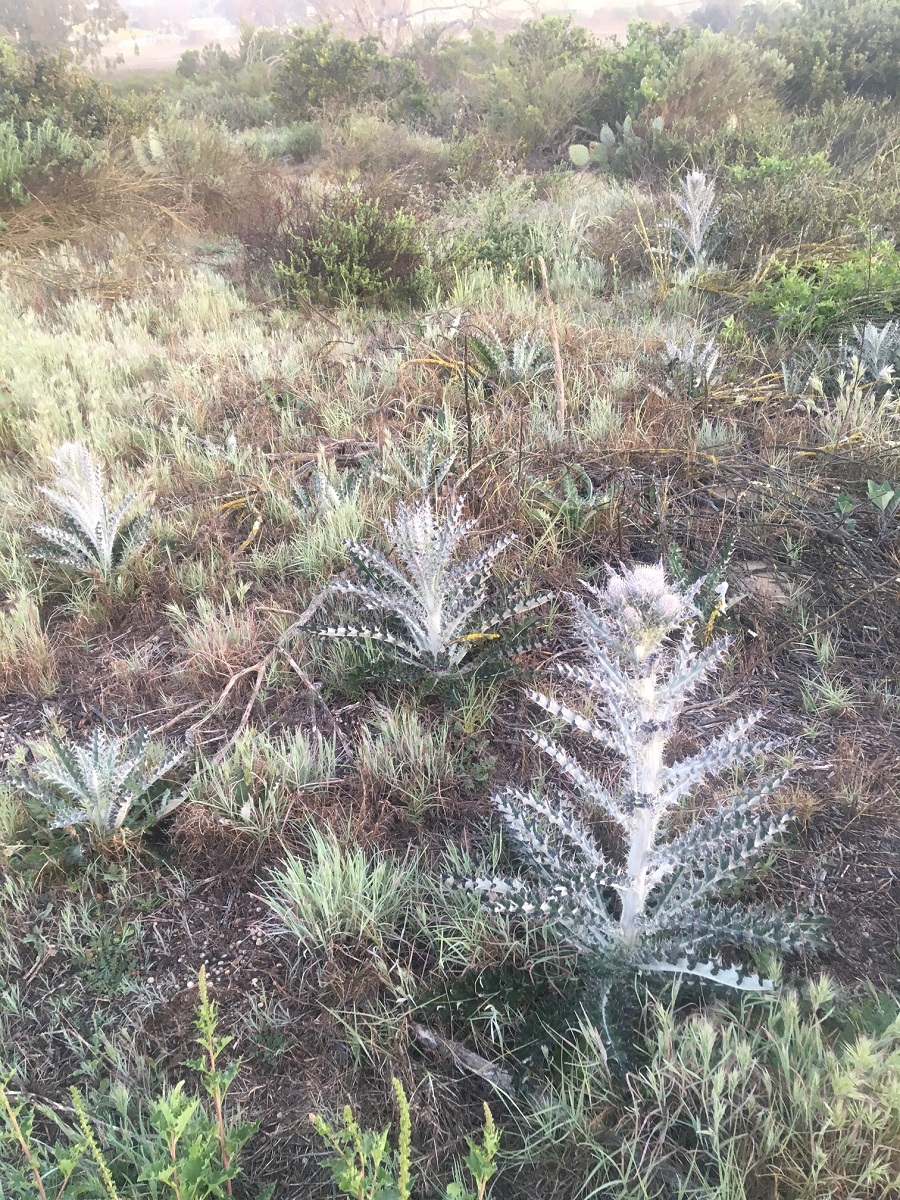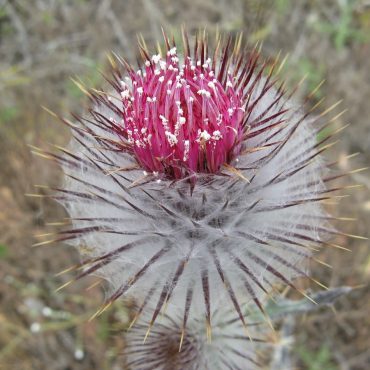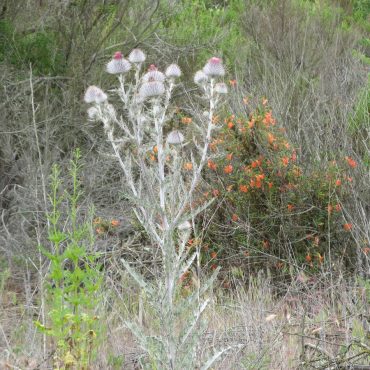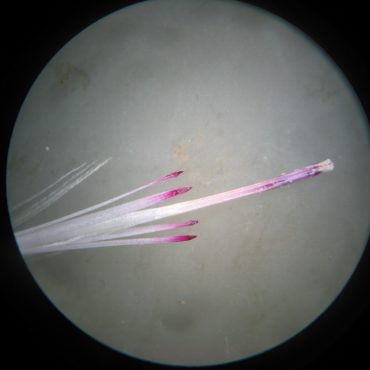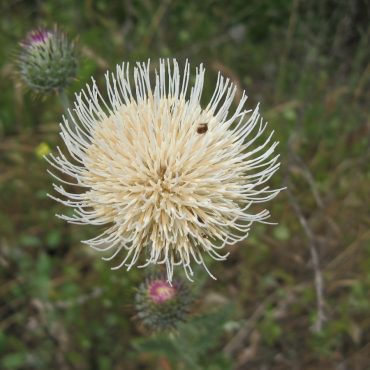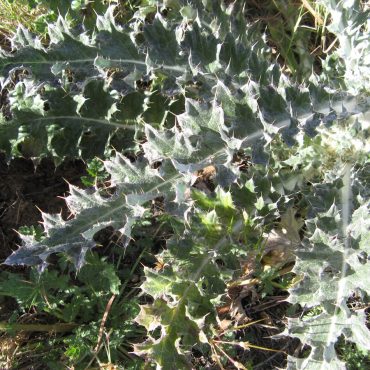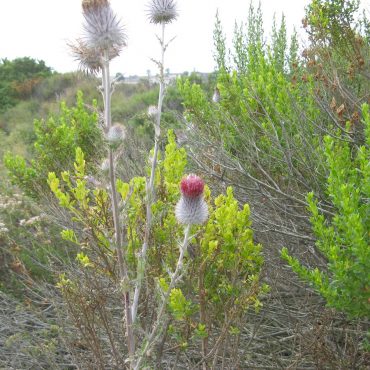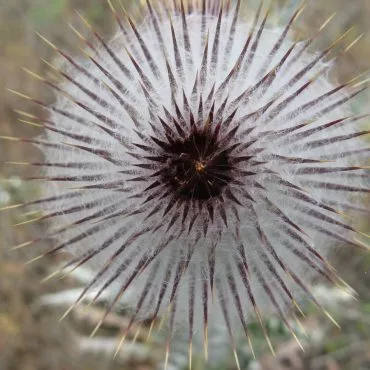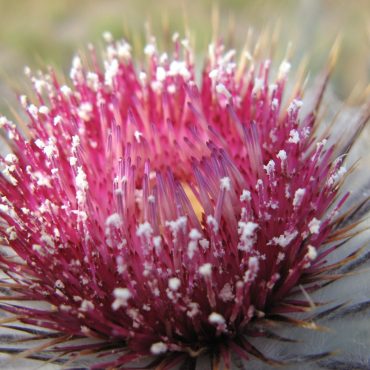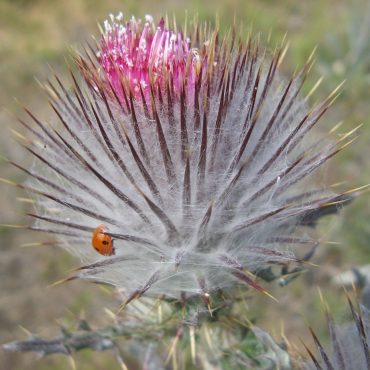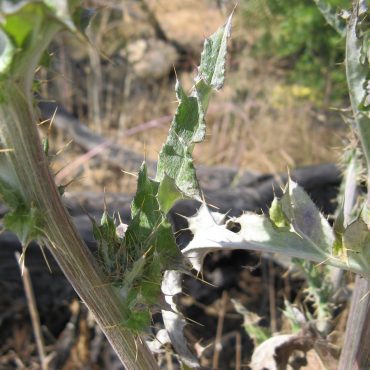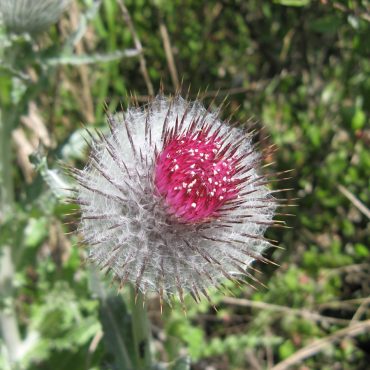Thistles have neither spines nor thorns. Thistles have prickles – and there is a difference. A thorn is a modified branch, and a spine is a modified leaf. Both thorns and spines have vascular tissue. In contrast, a prickle develops from the surface tissue and may occur anywhere on the plant – on the stems or leaves or flower heads. Thorns and spines are not easily removed from the plant; prickles often are. Spiny redberry (Rhamnus crocea) has thorns, not spines, roses (Rosa spp.) have prickles, not thorns, and thistles have prickles. Even botanists tend to be casual about their use of these terms.
Thorns, spines and pickles are all thought to serve the same function, to deter grazing by large herbivores. Livestock not only do not eat thistles, but they will not forage around them. Cobwebby thistle is deer resistant.246
In spite of it’s fierce defences, cobwebby thistle has significant wildlife value. It is an important source of pollen and nectar, especially for native bees and butterflies.59,83 The painted lady, which occasionally forms huge migratory swarms in Southern California, both feeds and nectars on cobwebby thistle,116 and goldfinch relish the seeds. Rarely have we examined a cobwebby thistle without finding one or more ladybugs on patrol, suggesting a supply of prey insects hidden beneath the “cobwebs.”
The long cobwebby hairs may also have adaptive advantages. For a discussion of the ecological role of hairs, see the Ecology discussion of California croton, Croton californica.

